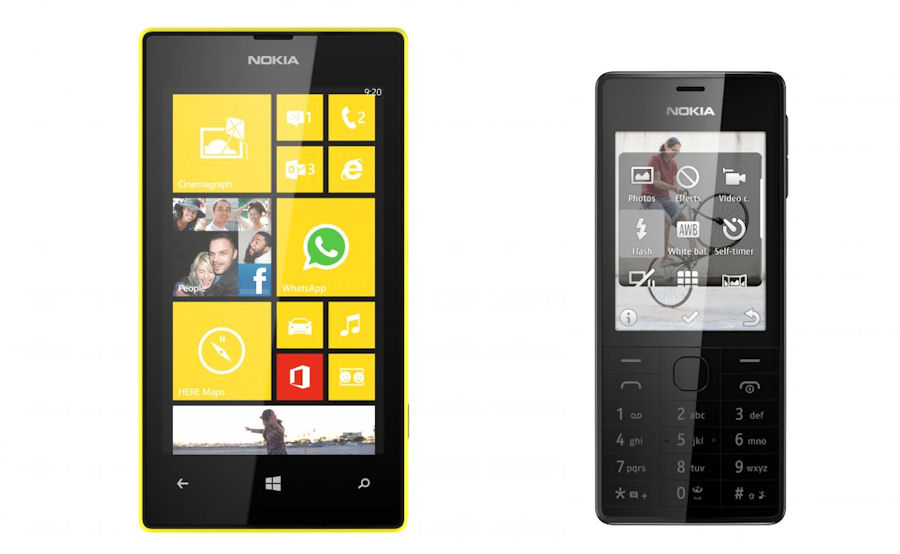The Nokia 515 is a Series 40 based device built, with premium materials, around the classic mobile phone form factor. The device costs around £100, roughly the same amount as the Nokia Lumia 520, but the two devices are a study in contrasts.
The Nokia 515 is built from a single piece of anodised, sandblasted aluminium, while Gorilla Glass 2 protects the gently curved display, and the keymat, which continues the gentle curvature of the screen, is made from a hardened polycarbonate resin. The Lumia 520, which is built from cheaper polycarbonate and glass materials, can't match the premium feel of the Nokia 515 in the hand.
The Nokia Lumia 520 has a large touchscreen, ideally for consuming large amounts of content, be it multimedia, games, or apps, but that is, perhaps, less well suited for the phone part of smartphone. The Nokia 515, with its dedicated numeric keypad, has a form factor that reminds us that there was a time before touchscreens, ideally suited to the entry of numbers and one handed usage.
The Lumia 520 runs Windows Phone 8, providing all the key smartphone experiences, from apps to maps and everything in between. The Nokia 515's Series 40 software provides smartphone like features, but with an experience is cut-down compared to the Lumia 520, and which puts the phone first and the smart second. Each approach has its merits and it would foolhardy to declare the Lumia 520 the de facto winner, without first considering the requirements of potential users.
In real world usage the Nokia Lumia 520 will require a charge every day, whereas the Nokia 515 should just about last a week on a single charge. The Lumia 520 has the physically bigger (4 inches versus 2.4 inches) and higher resolution (WVGA versus QVGA) screen, making it easier to read text and browse the web, but the Nokia 515 is smaller and lighter. And so it goes on...

So will the smartphone rule the roost, or will the traditional mobile form factor take the day? Neither, is the honest answer. For the foreseeable future both types of handsets will continue to coexist. Smartphones will continue to erode feature phone sales, but this process is likely to slow over the next few years. Smartphones are a long way from threatening the sub £20 market in a serious way, but how big the remaining rump of feature phones will be is difficult to predict. To a large extent it will likely to depend on how well the cheapest smartphone are able to ape the strongest attributes of the features phone (simplicity of experience and power management).
But what is interesting to note is that in the very first paragraph of the post introducing the Nokia 515 Nokia Conversations describes the handset as being "equally suitable for use as your main device or as a companion to your smartphone". It's not going to apply to all feature phones, but there is, perhaps, potential for a feature phone with a premium design to fill a secondary device role.
There are stumbling blocks, most notably the inconvenience of switching SIMs, but nothing insoluble with a little work from operators. We have tablet and smartphone bundles today. Will tomorrow bring smartphones and feature phone bundles?
